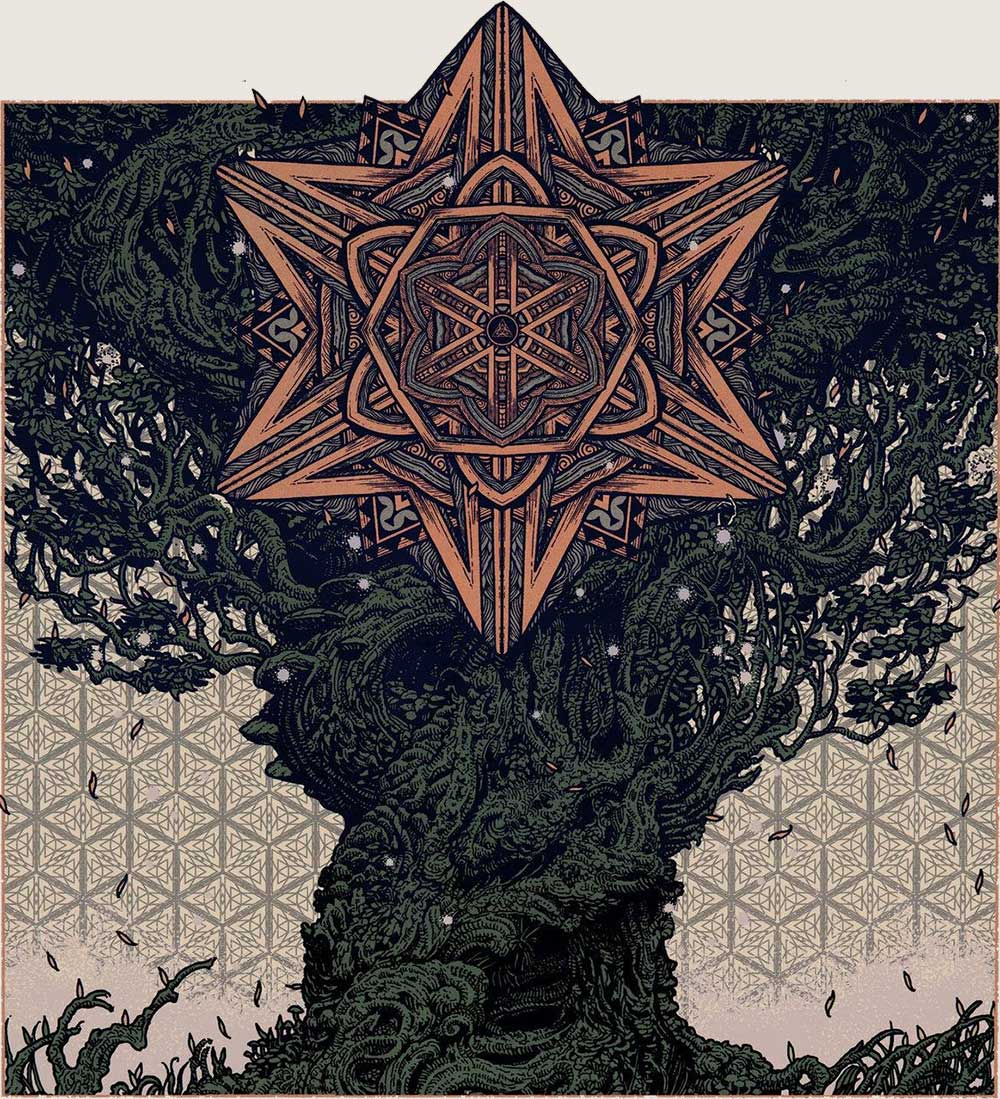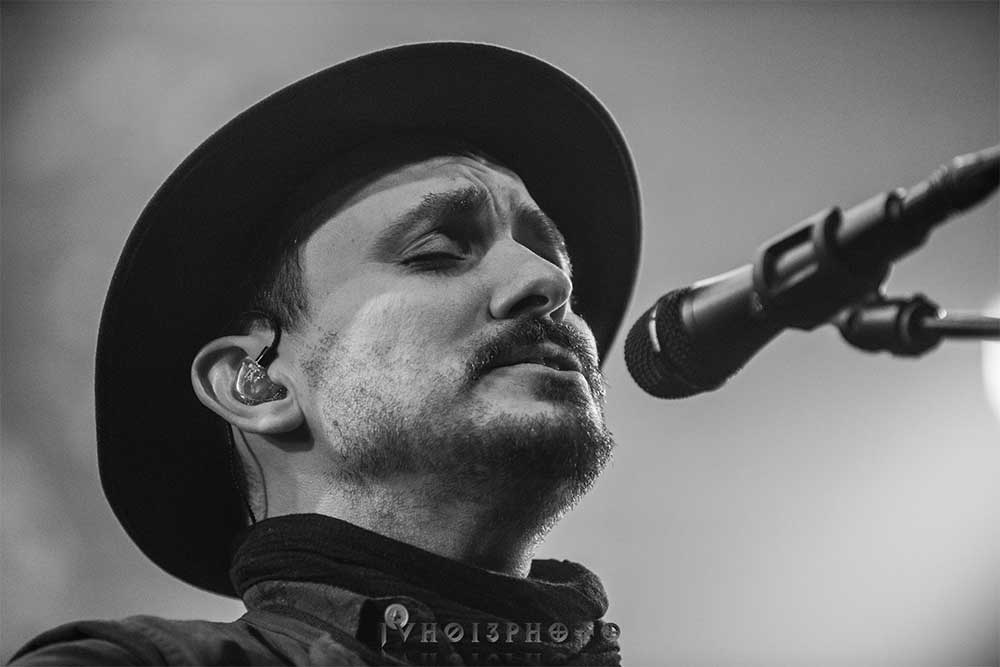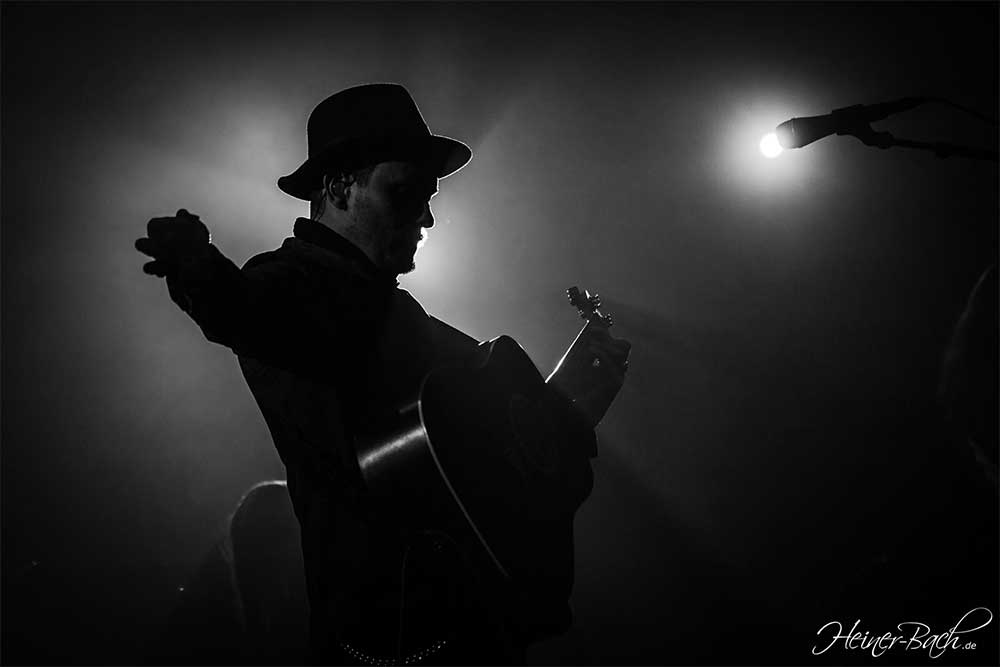Hexvessel
2021-05-19
by Niklas Göransson
Occult sound of the Finnish forest, basking in the light of a kindred moon. Hexvessel founder and frontman Mat McNerney speaks of the fire in the minds of men.
Here follows the first part of this conversation. The second – which is significantly longer and more in-depth – is published in Bardo Methodology #7. The same issue also includes conversations with BLACK WITCHERY, GOSPEL OF THE HORNS, MACABRE OMEN, THORYBOS, ANTEDILUVIAN, ATLANTEAN KODEX, MGŁA, Cold Meat Industry, MORTIIS, MONUMENTUM, WARLOGHE, and ORDO TEMPLI AETERNAE LUCIS.
– “Kindred”, the fifth HEXVESSEL album, completes a magical circle: like the final point of a pentagram. I see it almost as a flipside to its predecessor, “All Tree”; as plumbing the depths of the ocean beneath that record. We didn’t go outward or open, we went inward and closed as the journey now takes us deep into the forest. Not towards a clearing or back to the outskirts, where perhaps an album like “When we are Death” led. There’s no effort on our part to make that palatable, or relatable, outside of following the call of this art. I am a firm believer in music being alive in what it means and where it comes from. The songs on “Kindred” had very different birth-paths, with some of them gestating over a long period of time. Certain sections, such as “Joy of Sacrifice”, might be a decade old whereas others, – “Demian”, for example – are very new but with lyrics I’d been ruminating on for three years.
“Kindred” was released by independent Finnish label Svart Records in April 2020; it comes only one year after “All Tree”.
– I often quote the BOARDS OF CANADA album “Music Has the Right to Children”. I think that’s a wonderfully apt way of explaining how I feel about our songs and the artistic relationship I have to them. Musically, the sound and creative work is what I’ve been gearing up towards with HEXVESSEL since the very first day. There is now a complete band around me, all of whom I have a strong and creative connection with and trust artistically to give input into the music and arrangements. HEXVESSEL is unified, and getting here took a long time. I should say that the band is ten years young, because this was the groundwork it took to get to where we are today – at a new beginning.
The album contains a phenomenal cover version of “Fire of the Mind” by British experimental ensemble COIL. I read that it was recorded ‘live from a mental institution’.
– At the end of 2018, we were recording a live version of “Closing Circles” and decided to add a cover to the same session. I’d wanted to do “Fire of the Mind” for many years, as I consider the song very important to me. Our guitarist, Jesse Heikkinen, knew the janitor of Pitkäniemi Mental Institution. Its future was uncertain at the time, with hardly any occupants still residing there. From the very outset, it’s in a beautiful location on the great lake with a stunning view and atmosphere. We recorded in the large assembly hall, on the wooden floor. Everything was tracked live using regular mics and a basic setup – only our own equipment, nothing fancy – and in one single take with no overdubs. I’d say the location was somewhat coincidental in the sense that we had very simple logistical requirements, with everything else being an added bonus. However, I don’t really believe in coincidences: not when it comes to artistic work of transcendent nature. We now know that the mathematical and astronomical skill of the builders of our ancient towns and cities were far greater than we once thought. The placement of such an institution is not accidental either; aside from being a perfect place to recuperate and heal the mind, I believe the site has resonance and power.
HEXVESSEL originally used the COIL cover as an extra towards the end of their “Closing Circles” video – a live recording meant to promote “All Tree”, released by Century Media in February 2019.
– I’m not sure it was widely seen though. Then we played the song live on tour and people were very complimentary and asked why we hadn’t released it properly. To be honest, there were some apprehensions regarding the cover song from our record company at the time, which is more of a mainstream metal label, and they probably didn’t understand COIL and were worried about copyright and legal issues. There was also this concern that people in Germany might have negative associations to COIL, and also CURRENT 93 who we wanted listed as an influence in our biography. I found this quite perplexing, and still do. Art is art. When HEXVESSEL signed back to Svart, I felt we hadn’t yet completed our task with “Fire of the Mind”. Then “Kindred” started coming together and it felt as if it’s place on the album was just singing out to be there. I can’t even imagine a version of that song where we could play it with more feeling and energy than the one from Pitkäniemi. Then, of course, there’s the association of that place with both the song itself and the COIL story.
The COIL story started in 1982 when John Balance, who’d previously worked with dark ambient pioneers LUSTMORD, founded what was originally meant to be his solo-project. He soon recruited Industrial Records co-founder Peter Christopherson, with whom he not only played together in PSYCHIC TV but was also romantically involved. The pair first met in 1980 when Balance, on behalf of his ‘zine, Stabmental, interviewed THROBBING GRISTLE, a legendary industrial band Christopherson was part of. Over the years, COIL explored a wide range of mainly electronic music – drone, acid house, dark ambient, and so on – yet never expressed much interest in other bands as inspiration, drawing more from the writings of Austin Osman Spare, Aleister Crowley, and William Burroughs. Signs of their esoteric inclinations were present already on the 1984 debut album, “Scatology”, which had a conceptual focus on hermetic alchemy. “Horse Rotorvator” from 1986 was based on a terrifying vision Balance had seen. He beheld the Four Horsemen of the Apocalypse slaying their mounts and using their jawbones to construct a gigantic plough: an earth-moving ‘mechanical flesh thing’. The COIL project kept evolving over the years, with their 1991 “Love’s Secret Domain” becoming hugely influential to the post-industrial scene. After releasing “Musick to Play in The Dark Vol. 1” in 1999, they performed live for the first time since 1983. This went on with irregular cycles of new releases and concert performances until one fateful night in November 2004, when John Balance died after a falling accident in the house he shared with Christopherson. The latter later remarked that Balance spent his final few weeks in an ‘oblivion of vodka’; ‘although’, Christopherson wrote, ‘that day he had eaten some soup and had a bath and was not quite as insensible as he had been.’ The final COIL album, “The Ape of Naples”, which contains “Fire of the Mind”, came out in 2005. Five years later, Christopherson was found dead in his home in Bangkok, Thailand.
– “Fire of the Mind”… consider the meaning of that title. Fire destroys, but also nurtures, supports, sparks, and inspires life. In his book The Possessed, Dostoyevsky depicts a stagnant provincial town which is suddenly inspired by new ideas. Shortly after a turbulent literary evening, a mysterious fire breaks out and a local official cries into the nocturnal confusion: ‘The fire is in the minds of men, not in the roofs of buildings!’ That ‘fire in the minds of men’ transforms the substance of our universe; ideas take root, catch flame, ignite, and give birth to a universe. The ordinary transformed into the extraordinary, thoughts and willpower into action. The Industrial Revolution allowed us to tether that fire into machinery and so changed the entire course of our species. Mastery of the flame is what separates us from the remaining animals. But as we use fire, we’re also doomed to play with it. To gamble with it. This is, in effect, magic and the pursuit of magic. When we see fire, we are reminded of the magic inherent in the universe and within ourselves – of the ‘fire of the mind’. COIL was one such band that definitely knew about music as a magical art form.

Mat has previously stated that his understanding of the occult informs the way he approaches music. This leads us to a topic of great interest to me: psychoacoustics, the understanding of music and sound as stimulus to the human nervous system. HEXVESSEL is perhaps closer to the ceremonial than the scientific aspect of this.
– I am very interested in the scientific aspect of psychoacoustics, but I’m not that well read on the subject yet. I study music at Tampere University and I’m hoping to delve more into this field in the next year. We’re more concerned with practical psychoacoustics in another project of mine: TEMPLUM N.R. Our label, Aural Hypnox, is very much in that neck of the woods. HEXVESSEL is concerned with the science of nature hidden in the ancient world. I think of it as a hermetic rite that’s about the search for the principle of life which makes us what we are. The fire of the mind and the spirit. I believe that we who seek and find this through art are kindred. We’re also part of a family that’s been building around HEXVESSEL over the last ten years, unifying the esoteric and natural world. There’s a community around what we do, with people going out into the forest and listening to our music and taking photos and quoting the lyrics when they experience something life-changing or beautiful. So, even on a basic level, there’s a transference going on and a cycle between the artist and listener. The perfect circle of true magic is when a listener then influences me through the way they relate our music to the nature they’re experiencing. That happens quite frequently now, so I learn a lot from the community around us. It’s that principle of reciprocity, the energy you’re putting out is what you get back. Songs are like time-machines – you hear one in a pivotal moment and it never leaves you. Music is charged with energy and strongly connected to memory.
When hearing a familiar piece of music, one which triggers recollections of people or locations, we will often see a visual representation of that memory played before the mind’s eye. According to neuroscientific research carried out at the University of California, both the tracking of key and chord changes and the memories associated with music are processed in the same brain region. Cerebral scans show how the medial pre-frontal cortex lights up whenever a song relevant to the subject’s personal history is played. Autobiographical recollections typically trigger spikes in activity along with an emotional response, all the while tracking the tune’s signature and timescale. This brain region is one of the last to deteriorate, which could potentially explain why late-stage Alzheimer’s patients often react to music from their past.
– The biggest compliment is to have your music be someone’s wedding song. What power that memory now has! We have people telling us this very often, that HEXVESSEL’s music has been their life song. That’s because people want to plant meaning into their lives. They are actively opening themselves to the message of the music and sound, allowing it to improve their life, imprint the memory, and create a time picture with it. I’m also interested in ‘soundmancy’, where music creates shapes of moments, hypnosis, and illusion. When listening to music resembles time travel – where the mood of that event has been captured – it can also be used to foresee things and better recognise such instances. When you intentionally capture a hypnotic state on record, you install it in the listener. When an artist has that reference in his or her mind, then they are able to evoke it whenever necessary. It’s also comparable to when someone has altered the musical landscape through film. David Lynch, for example, shaped the way we see things so much that certain views and moods now feel ‘Lynchian’. You transform the fabric of the universe through art and the states of seeing. Music is then both physical and metaphysical. Collective history can be changed. Coltrane believed “A Love Supreme” to be an offering to the gods, and that album forever revolutionised jazz and music in general.
“A Love Supreme” was recorded in one and the same session on December 6, 1964. The following month, Impulse! Records released what’s commonly regarded as a cultural milestone. At the time of its creation, American saxophonist John Coltrane had clawed his way back to optimum functionality after almost completely derailing a once-promising career with a decade-long addiction to heroin and alcohol. Coltrane’s approach to art was tightly intertwined with his own religious journey. He studied the Indian Raga, a complex notation ruleset central to Hindustani music. Ragas have deep spiritual connections and are believed capable of ‘colouring the mind; or, as Coltrane put it, ‘produce specific emotional meanings.’ Convinced that music from all corners of the earth operates under a universal structure, Coltrane argued that the musician’s calling was to comprehend and harness its inherent mystical language – to channel it in a way that moves the listener.
– When evoking the magical in music, you are – like the shaman – in-between two worlds. But you might just lose yourself out there, if the ego takes over and you believe yourself to be the character you’re channelling. You must separate those two people with the magical threshold you create; otherwise, you can become lost, perhaps indefinitely. We all know those musicians. We, as artists, are all susceptible to this danger. But art itself should always be dangerous. That’s when our material reality and the spirit world are at their closest. If you consider what you do to be shamanic, then there must be ceremony. That includes the way you treat being on tour and how you install ritual practice also into your time off stage.

In a Heathen Harvest HEXVESSEL feature by David Christian, the drummer of SABBATH ASSEMBLY, Mat expressed some dismay that their mutual 2012 tour had degenerated into somewhat of a roving party machine rather than anything ceremonial. Honestly, I’m not quite sure what he was expecting. Mat must have participated in quite a few tours back in his black metal days, so how he imagined getting through such an ordeal without being sucked into the on-the-road mindset is beyond me.
– I was just referring to something we’d discussed before touring with them. Marja and I visited David in New York and we connected over everything from the occult to 60s and 70s prog and folk. We also discussed the idea of doing a tour that was the antithesis of all the tired rock and roll clichés. We wanted to have both bands always on stage to accompany each other’s songs and make it more like a rolling revue with occult ceremony and a sense of higher purpose. There were a lot of ideas which never panned out. Of course, it went the way of any other tour after that, but I think both of us were a bit disappointed to find ourselves leaning into old familiar ways instead of striving to at least make some aspects a little different. We both felt the same way, I think. David has since become a dear and lifelong friend, so I suppose the tour did neither of us any harm; on the contrary. I do think it’s good to mourn the lack of a mystical and arcane aspect on tour, because what you’re doing is and should be transformative. It’s an exchange of energy between artist and audience that must be respected. You’re right in that you cannot avoid getting sucked in, but you can do it your way and in a manner which makes everything feel more like a sacrament.
Have you made any changes since then?
– I now try to make sure each tour has time for us to visit ancient sites, to get some cultural benefit from doing it so you offset the hedonism a little bit. I paint on tour, and I write, so I try to fill my day with a little bit more than the time socialising in the van and then boozing after the show. Cultural offsetting. It’s about mindful thinking and also magical thinking; to make sure you’ll get something else from your journey and visualise something different out of your stage shows. Then the partying has focus and becomes part of a different mindset. We went on tour with ARKTAU EOS and one of the members, A.I.H, was a part of our “All Tree” album.
ARKTAU EOS is a Finnish ritual ambient project, active since 2005. The two members, A.I.H. and A.I.L, have previously been involved with metal bands such as BABYLON WHORES and DOLORIAN.
– We worked with A.I.H. as our priest, to inject ritual into the before and after-show practices, so we had increased energy and focus for what we were doing on stage. So, there was a certain aspect of meditating, and quite different from any tour before that. We’ve since carried that onwards and it works to one hundred percent. We are now a more content, focused, and confident live band. It made the experience feel ‘magical’, because we believed it more. It doesn’t at all take away from the other aspects of touring but, I think, makes them more enjoyable too. Otherwise, your music is just the excrement of your drinking and partying habits. I also believe it’s very careless to sit on your phone or laptop just before going on stage to perform music about deep themes. What you want to present is carried inside you, so to do this properly you must be mentally prepared to offer it up. We have a totem slogan, or quote, on our backstage pass that we custom-make for each trip and which holds the journey’s modus operandi. Having this quote in mind serves as a daily reminder that we’re here to do magic, not just have a drinking holiday. The last inspirational quote we used was from Eliphas Levi and it explains our sentiments perfectly. It said, ‘Celestial messengers, we shall wander in immensity, and the stars will be our gleaming ships.’

Music has been with mankind since the dawn of time, utilised for every conceivable purpose. However, it’s only in the most recent era we’ve had the capacity to record music and make it available for anyone to enjoy at any given time. The heart and soul of music has always been the live enactment: the concert performance. This got me curious about what is more important to a modern musician – immortalising their compositions in a studio or playing them live?
– Performing and experiencing live music is about leaving this world behind and entering a new universe with different rules. It’s a supernatural state called ‘the magic circle’ which has been discussed extensively in academic esoteric studies. It’s a completely unique and powerful ceremony of energetical transference. Regarded like this, live music to me is utterly different to recorded works of art in what it does. I live for writing songs; it’s a purging act that grants me fulfilment. I am less of a sound perfectionist than I used to be – compare even “All Tree” to “Kindred” and you’ll see what I mean. That’s because I’ve shifted focus to performance and capturing a moment or feeling, rather than trying to attain a certain soundscape. It needs to be performance over all else for me now. If you mean it, it will sound accordingly. Today, ‘good sound’ has become just about convention rather than being subjective, as it rather should be. I really hate doing overdubs and ironing things out in the mixing room now, I want as much as possible performed live. We’re creating a monument and a time capsule. Following this rationale, it’s obvious that live music is the pinnacle of what we do as musicians. It’s the most important aspect of the art and, like theatre is to acting, also the most magical.
We presently find ourselves in a reality with no live music at all. So, while we can instantly access more or less any audio recording ever put to tape, we are no longer able to enjoy them in concert.
– I’ll be able to go on writing songs and creating music without the live setting for now, but I don’t like how a lot of musicians have taken the idea that, ‘Okay, if I can’t play live, then I’ll just go into the studio and record something.’ I’ve never created music from boredom, or simply having the time to create. I don’t do what I do from compulsion because, like some sort of construction worker, I must ‘show up for work’. I’d hate that we just churn out another album because, ‘Oh, we can’t play shows, so we should just go and make a new record then.’ HEXVESSEL is a spiritual journey; I will create and output music based on the will of this current, not just because of contemporary events. The most common defect of today’s artists is that they don’t know why they do what they do. The frantic scrambling of musicians in this crisis, obsessively setting up their live streams… all they’re saying is. ‘Look at me, pay attention to me’ – very few are offering escapism or art or anything that helps people at all. They’re just floundering without their easy fix of self-gratification and flattery. They’re merely in love with the rock and roll dream and are not artists in the real sense.
What do you think one should do?
– I agree with what Nick Cave had to say about this: spend time with your kids, Skype with mum and dad, write emails and letters to your loved ones and friends, as this is your chance to reflect and live. If art is based purely on our ability to make money, then the art suffers and so does the audience. I don’t want to mark the present moment with something created about this time, or to do my art the disservice of making it a remedy for some personal financial crisis. That’s not what HEXVESSEL has been about. If you follow our lyrics, then I think that what we stand for will have relevance in this current climate anyway. We are for something more timeless than a short turmoil in the record industry. When creating art based on this crisis, you must be careful that what you’re doing as an artist is genuine. I feel as if people are just crying for the death of industry and business, not of art and music. Musicians have lived through everything in history, so I think we should straighten our backs, put away the begging caps, and simply chip in and help where we can. Great art is escapism and shouldn’t all be social commentary. Lockdown music really is the last thing this world needs.

Above is the first part of this conversation. The second – which is longer and more in-depth – is published in Bardo Methodology #7. The same issue also includes conversations with BLACK WITCHERY, GOSPEL OF THE HORNS, MACABRE OMEN, THORYBOS, ANTEDILUVIAN, ATLANTEAN KODEX, MGŁA, Cold Meat Industry, MORTIIS, MONUMENTUM, WARLOGHE, and ORDO TEMPLI AETERNAE LUCIS.



